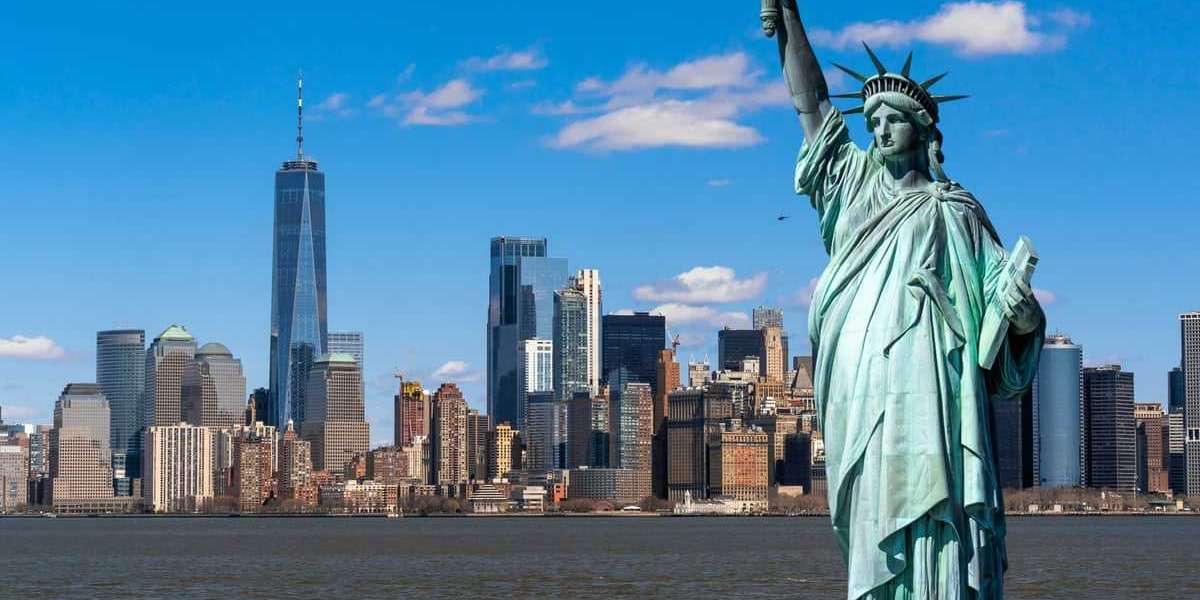Liberty Enlightening the World, colossal statue on Liberty island in the upper New York bay, U.S. is a copper statue a gift from the people of France to the people of the United States which was designed by French sculptor Frêdéric Auguste Bartholdi and its metal framework was built by Gustave Eiffel. The statue was dedicated on October 28 1886. This statue is a figure of Libertas, a robed Roman liberty goddess. She holds a torch above her head with her right hand and in left hand carries a tabula ansata inscribed JULY IV MDCCLXXVI, the date of the US declaration of independence. A broken shackle and chain lie at her feet as she walks forward, commemorating the recent National abolition of slavery. After its dedication, the statue became an icon of freedom and of the United States, seen as a symbol of welcome to immigrants arriving by sea.
Bartholdi was inspired by a French law professor and politician, Édouard René de Laboulaye, who is said to have commented in 1865 that any monument raised to U.S. independence would properly be a joint project of the French and U.S. peoples. Franco-Prussian War progress until 1875, when Laboulaye proposed that the French finance the statue and the U.S. provide the site and build the pedestal. Bartholdi completed the head and the torch-bearing arm before the statue was fully designed, and these pieces were exhibited for publicity at international expositions. As an American icon, the Statue of Liberty has been depicted on the country's coinage and stamps. It appeared on commemorative coins issued to mark its 1986 centennial, and on New York's 2001 entry in state quaters series. An image of the statue was chosen for the American eagle planetarium bullion coins in 1997, and it was placed on the reverse, or tails, side of the Presidential Dollar series of circulating coins. Two images of the statue's torch appear on the current ten-dollar bill. The statue's intended photographic depiction on a 2010 forever stamp proved instead to be of the replica at the Las Vegas casino.
Depictions of the statue have been used by many regional institutions. Between 1986 and 2000, New York State issued licence plates with an outline of the statue. The Women's National basketball Association's New York Liberty use both the statue's name and its image in their logo, in which the torch's flame doubles as a basketball. The New York Rangers of the National hockey league depicted the statue's head on their third Jersey, beginning in 1997. The National Collegiate Athletic Association's 1996 Men's Basketball Final Four, played at New Jersey's Meadowlands Sports Complex, featured the statue in its logo. The Liberation Party of the United States uses the statue in its emblem.
The statue is a frequent subject in popular culture. In music, it has been evoked to indicate support for American policies, as in Toby Keith's song "Courtesy of the Red, White and Blue (The Angry American)", and in opposition, appearing on the cover of the Dead Kennedys' album Bedtime for Democracy, which protested the Reagan administration. In film, the torch is the setting for the climax of director Alfred Hitchcock's 1942 movie Saboteur. The statue makes one of its most famous cinematic appearances in the 1968 picture Planet of the Apes, in which it is seen half-buried in sand.. It is knocked over in the science-fiction film Independence Day and in Cloverfeild the head is ripped off. In Jack Finney's time-travel time and again, the right arm of the statue, on display in the early 1880s in Madison Square Park, plays a crucial role.







